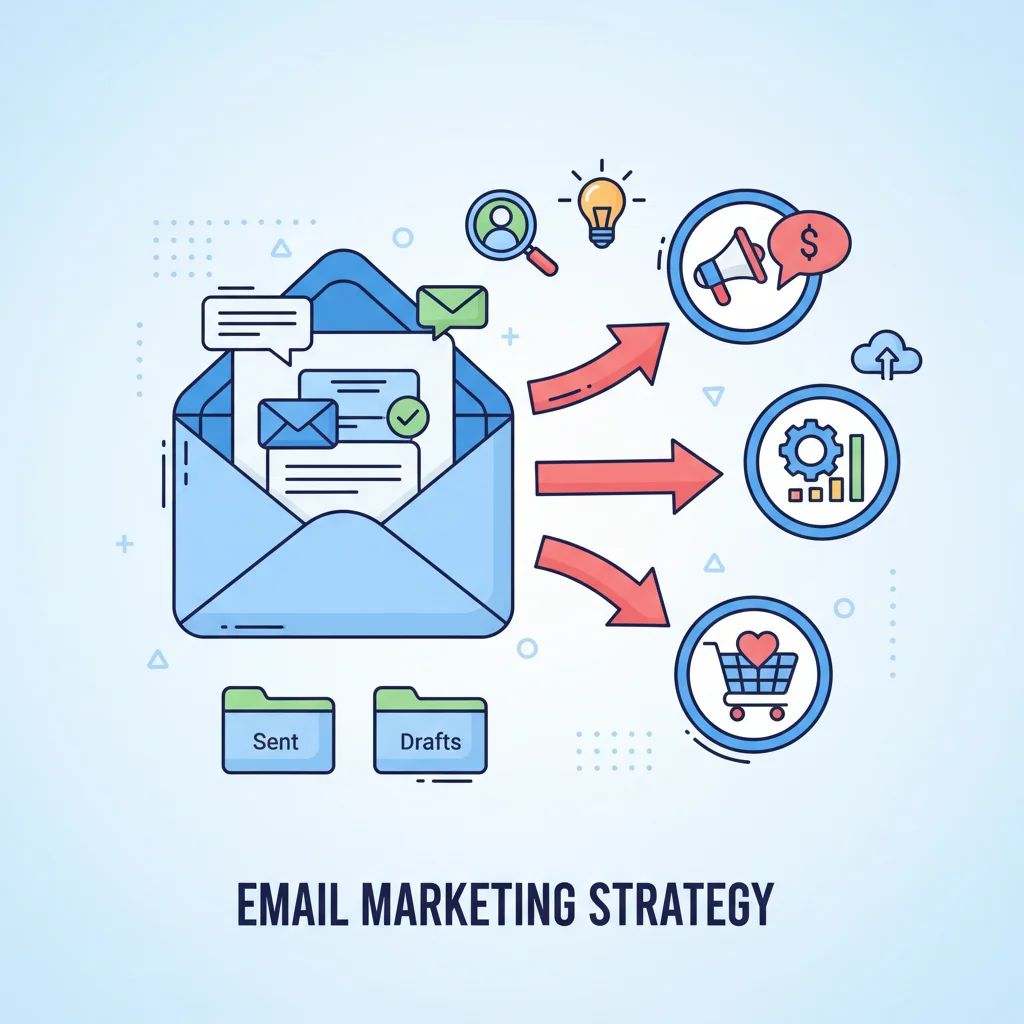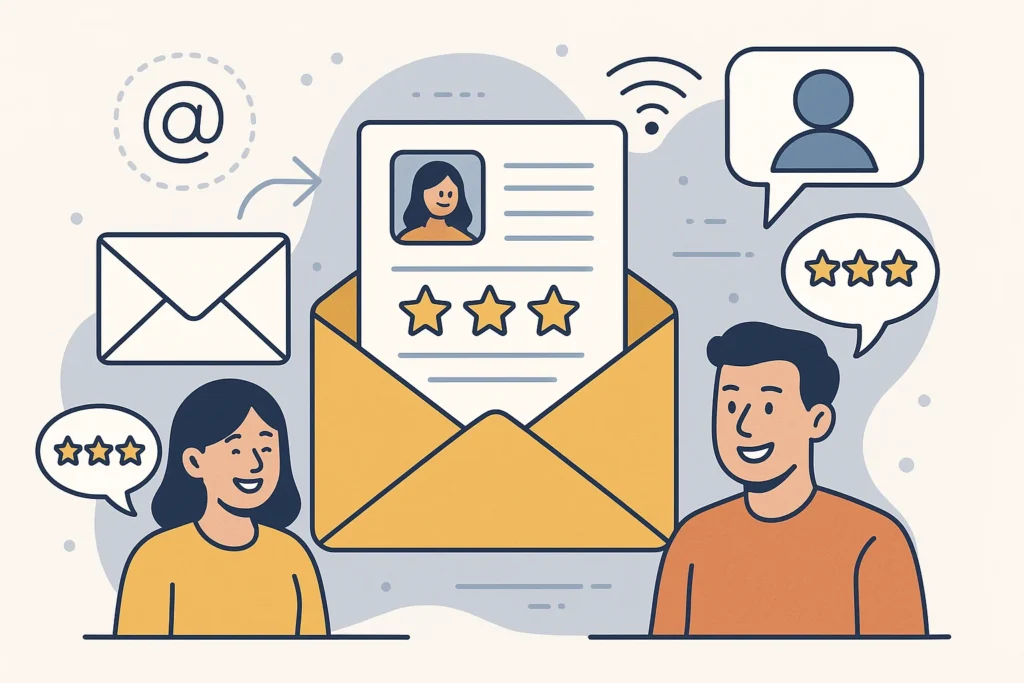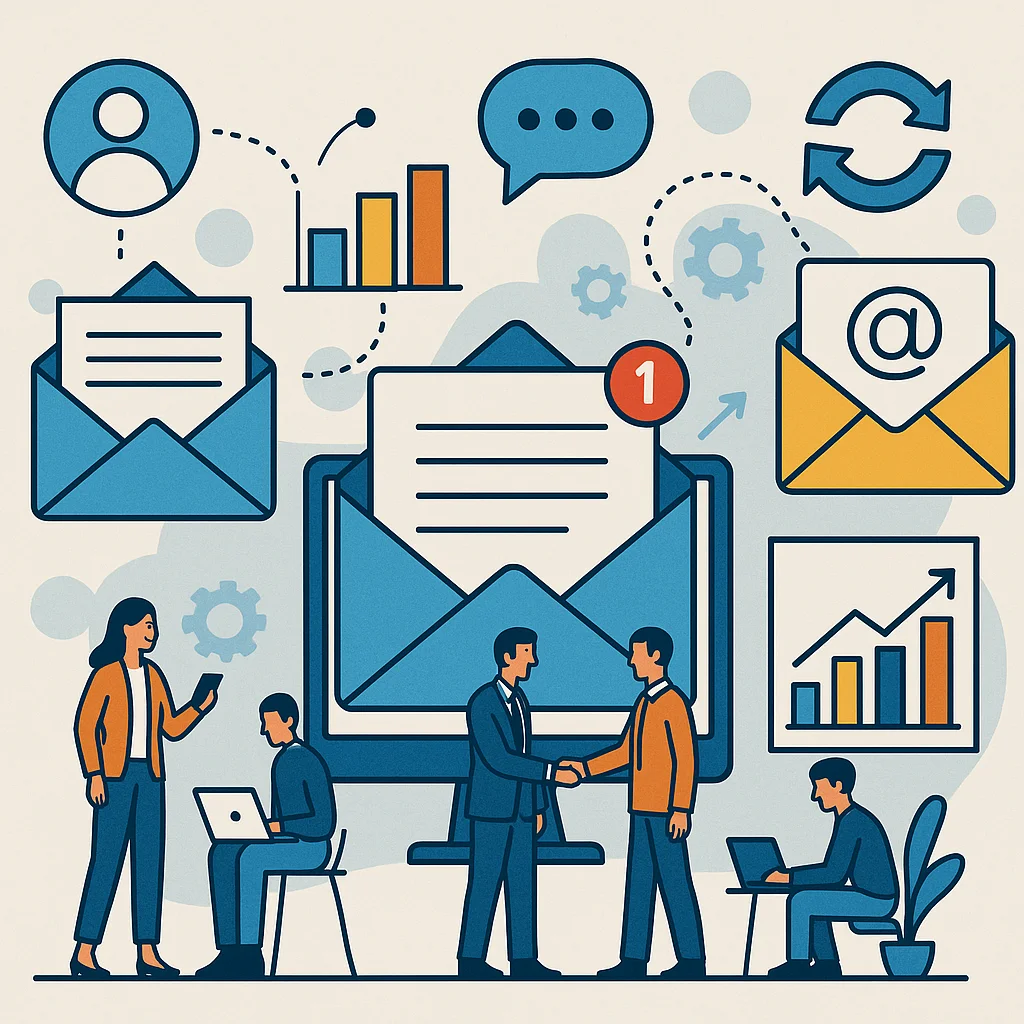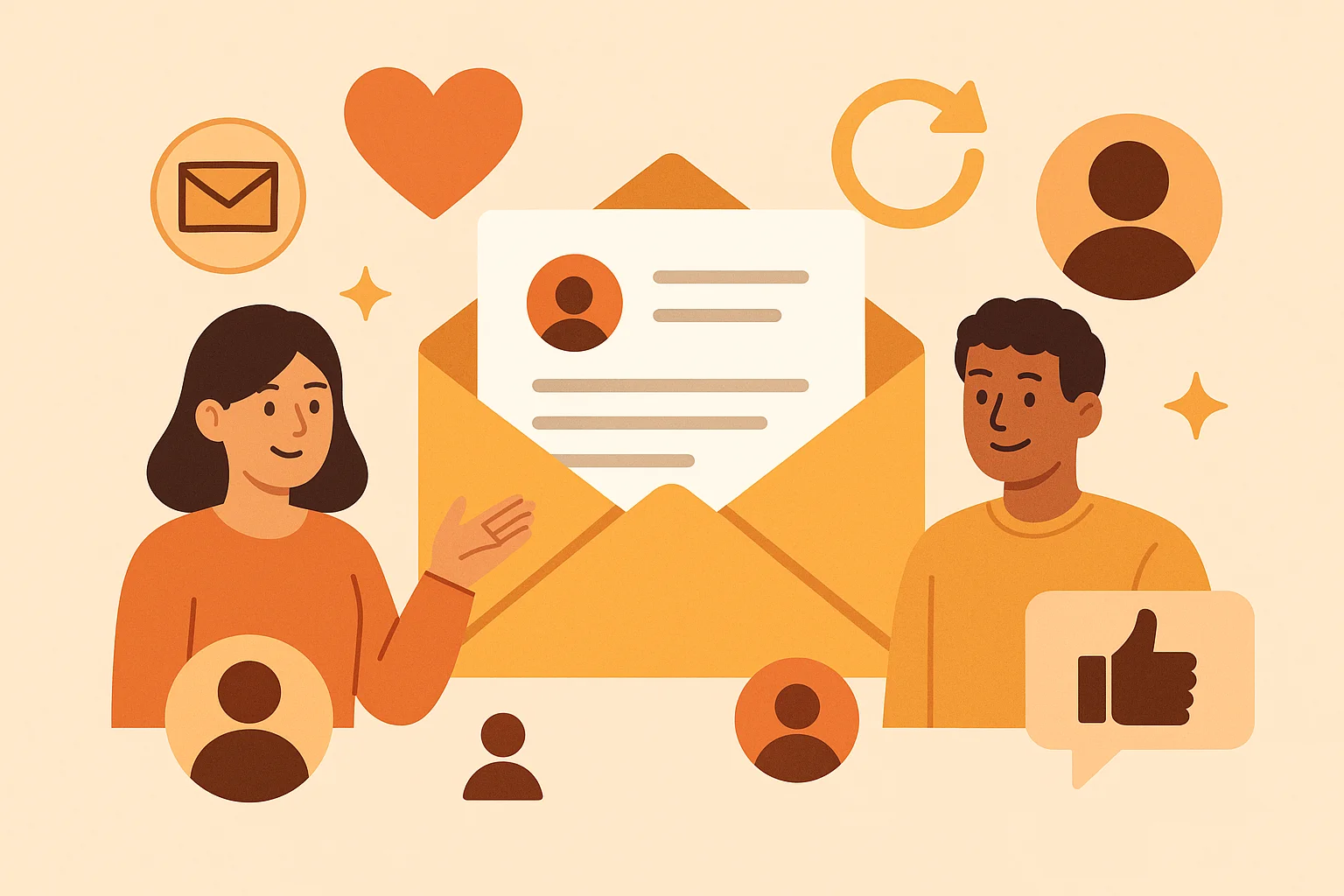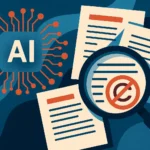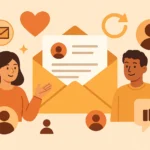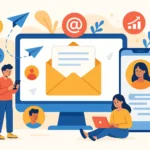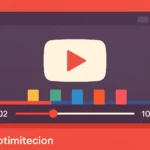Now Reading: Email Psychology Hacks: Marketing Strategies That Get Clicks
-
01
Email Psychology Hacks: Marketing Strategies That Get Clicks
Email Psychology Hacks: Marketing Strategies That Get Clicks
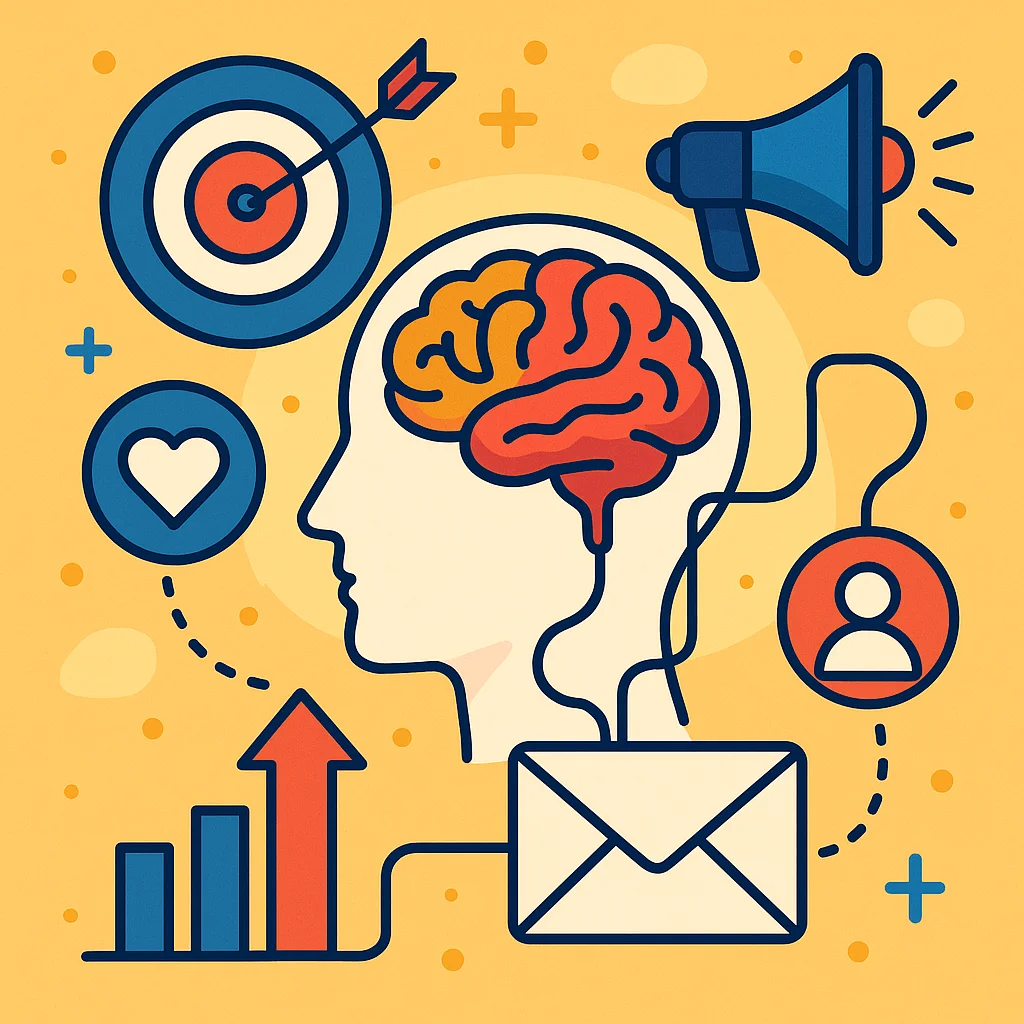
Nine seconds. That’s all the time you have to capture your reader’s attention in an email-down from 13.4 seconds just a few years ago. With attention spans shrinking and inboxes overflowing, psychology in email marketing strategies has never been more crucial. The difference between an email that converts and one that’s instantly deleted often comes down to how well you understand what makes your subscribers tick. Let me show you how to make those nine seconds count.
Key Takeaways
- Personalize beyond names – Use behavioral data to create deeply relevant content that speaks directly to individual needs and interests
- Create urgency and scarcity – Limited-time offers and exclusive deals tap into loss aversion psychology, boosting immediate action
- Leverage social proof – Testimonials, reviews, and user statistics build trust and validate purchase decisions
- Simplify choices with clear CTAs – Reduce cognitive load by focusing on a single, compelling call-to-action in each email
- Use reciprocity – Offer valuable free resources that create a sense of obligation and encourage reciprocal action
The Psychology Behind Email Marketing Success
Ever wonder why some emails make you click instantly while others get sent straight to trash? It’s not random-it’s psychology in action. As someone who’s spent years crafting email campaigns, I’ve learned that understanding how people think is just as important as knowing what to say.
Let’s dive into the fascinating world of consumer psychology and how it can transform your email marketing from ignored to irresistible.
The Power of Personalization
Gone are the days when slapping someone’s first name in the subject line counted as personalization. Today’s consumers expect-and respond to-much more sophisticated approaches.
Why it works: Our brains are wired to pay attention to content that feels relevant to our specific situation. When an email speaks directly to our unique needs, preferences, or behaviors, it creates an immediate connection.
Here’s how to implement advanced personalization:
- Segment based on behavior, not just demographics. Someone who abandoned a cart needs different messaging than someone who just made their fifth purchase
- Use dynamic content blocks that change based on subscriber data
- Reference past interactions to create continuity in the customer journey
- Personalize send times based on when individuals typically engage with emails
A study found that personalized email campaigns generate up to 6x higher transaction rates. That’s because personalization makes recipients feel valued and understood rather than just another name on a list.
Creating Urgency and Scarcity
Have you ever bought something just because it was about to sell out? That’s the scarcity principle at work-and it’s incredibly effective in email marketing.
Why it works: Humans have a deep-seated fear of missing out (FOMO). When something is limited in quantity or time, its perceived value increases dramatically, and we’re motivated to act quickly.
Try these urgency tactics in your next campaign:
- Countdown timers that visually show time running out
- Limited inventory alerts (“Only 5 left!”)
- Exclusive windows for special offers
- Seasonal or holiday-themed urgency that has natural time constraints
But here’s the catch-fake urgency can backfire spectacularly. Your urgency claims must be genuine, or you’ll lose trust. I once made the mistake of sending a “last chance” email followed by the exact same offer a week later. The unsubscribe rate was… educational.
The Trust-Building Power of Social Proof
We’re social creatures who look to others for guidance on what to do, buy, and believe. Social proof is one of the most powerful psychological principles you can leverage in email marketing.
Why it works: When faced with uncertainty, people naturally look to the actions and behaviors of others to determine the correct response. It’s a mental shortcut that helps us make decisions quickly.
Effective ways to incorporate social proof:
- Customer testimonials that address specific pain points
- Review snippets with star ratings
- User-generated content showing real people using your products
- Statistics that demonstrate popularity (“Joined by 10,000+ marketers”)
- Celebrity or influencer endorsements (when relevant to your audience)
I’ve found that emails featuring customer testimonials get approximately 25% higher click-through rates than those without. People trust other people more than they trust brands-it’s just human nature.
Cognitive Load and Decision Paralysis
Ever felt overwhelmed by too many options? That’s cognitive load-and it’s a conversion killer in email marketing.
Why it works (or rather, doesn’t): The human brain can only process so much information at once. When presented with too many choices or complex information, people often choose the easiest option: doing nothing.
How to reduce cognitive load:
- Focus on a single call-to-action per email
- Use clear, concise language that’s easy to scan
- Create visual hierarchy that guides the eye to important elements
- Break complex information into digestible chunks
- Use white space to give content room to breathe
I tested this with a client who insisted on promoting multiple products in every email. When we simplified to one clear offer per email, conversions jumped by 38%. Sometimes less really is more.
The Reciprocity Principle
Giving something valuable before asking for anything in return is one of the most effective psychological triggers in marketing.
Why it works: Reciprocity is deeply ingrained in human social systems. When someone does something nice for us, we feel obligated to return the favor.
Ways to leverage reciprocity in emails:
- Free, valuable content like guides, templates, or checklists
- Unexpected bonuses for loyal subscribers
- Early access to new features or products
- Exclusive discounts that feel like special treatment
The key is that your gift must be genuinely valuable-not just a thinly veiled sales pitch. I once created a comprehensive guide for subscribers that took weeks to develop. The response was incredible, with many recipients explicitly mentioning how they felt compelled to check out our paid offerings after receiving such valuable free content.
Useful Articles:
Emotional Triggers That Drive Action
Emotions drive decisions. Period. We like to think we’re rational beings, but neuroscience shows that emotions are the primary drivers of our choices.
The Power of Loss Aversion
People are more motivated by the fear of losing something than by the prospect of gaining something of equal value.
Why it works: Loss aversion is a cognitive bias where the pain of losing is psychologically twice as powerful as the pleasure of gaining. We’re wired to protect what we have.
How to use loss aversion in emails:
- Emphasize what they’ll miss, not just what they’ll gain
- Frame offers as solutions to potential losses
- Use “Don’t miss out” messaging strategically
- Highlight the cost of inaction or delay
An abandoned cart email that emphasizes potential loss (“The items in your cart are selling fast”) typically performs better than one that simply reminds the customer what they were looking at.
Curiosity Gaps
Humans are naturally curious creatures. When we sense there’s information we don’t have, we’re driven to fill that gap.
Why it works: Curiosity creates a kind of mental itch that can only be scratched by learning the missing information. It’s a powerful motivator for opening emails and clicking through.
Ways to create curiosity:
- Intriguing subject lines that hint at valuable information
- “Open loops” in email copy that get closed on your landing page
- Teasing valuable content without giving everything away
- Asking thought-provoking questions
I’ve seen subject lines that create curiosity gaps increase open rates by up to 35% compared to straightforward subject lines. Just be sure your email content delivers on the promise-clickbait that disappoints only works once.
The Psychology of Color and Visual Cues
Colors and visual elements trigger specific emotional responses and can significantly impact conversion rates.
Why it works: Different colors evoke different emotional responses and associations. These responses are partly cultural and partly hardwired into our psychology.
Color psychology tips for emails:
- Red creates urgency and excitement-perfect for limited-time offers
- Blue builds trust and security-ideal for financial services or healthcare
- Green suggests growth and health-great for wellness products
- Orange combines energy (red) with cheerfulness (yellow)-good for calls-to-action
- Black conveys luxury and exclusivity-effective for premium products
Beyond color, directional cues like arrows or a person looking toward your CTA button can subtly guide the reader’s attention where you want it to go.
Crafting Persuasive Email Copy
The words you choose matter enormously. Here’s how to write copy that connects psychologically:
The Power of “You” vs. “We”
Customer-centric language outperforms company-centric language every time.
Why it works: People care about themselves and their problems more than they care about your company. Harsh but true!
How to make your copy more “you”-focused:
- Count the ratio of “you/your” vs. “we/our” in your copy
- Translate features into benefits that matter to the reader
- Address the reader directly throughout the email
- Frame everything from the customer’s perspective
I once rewrote an email campaign simply by changing the perspective from “we’re excited to announce” to “you’re going to love” and saw a 23% increase in click-through rate. Small change, big impact.
The Paradox of Specificity
Specific, concrete claims are more believable and compelling than general ones.
Why it works: Specificity signals expertise and authenticity. It suggests you know exactly what you’re talking about, which builds credibility.
How to be more specific:
- Use precise numbers instead of round ones (e.g., “increase conversions by 27%” not “increase conversions”)
- Include detailed examples that paint a clear picture
- Specify exactly what will happen after they click
- Add timeframes to benefits (“in just 15 minutes”)
An email that promises “5 specific strategies that increased our open rates by 32% in 17 days” will typically outperform one offering “tips to improve your email marketing.”
Story-Driven Emails
Our brains are wired for stories. They’re how we make sense of the world and remember information.
Why it works: Stories engage more parts of the brain than facts and figures alone. They create emotional connections and make information more memorable.
Types of stories that work in emails:
- Customer success stories that show transformation
- Origin stories that build brand connection
- Problem-solution narratives that position your offer as the hero
- Behind-the-scenes glimpses that build authenticity
I’ve found that emails containing a relevant story get substantially higher engagement than purely promotional messages. Stories make your emails stand out in a sea of sales pitches.
Useful Articles:
Advanced Psychological Techniques
Ready to take your email psychology to the next level? These advanced techniques can give you an edge:
The Zeigarnik Effect
The Zeigarnik Effect states that people remember uncompleted tasks better than completed ones.
Why it works: Unfinished business creates cognitive tension that seeks resolution. Our brains don’t like loose ends.
How to use it:
- Create email sequences that build upon each other
- Use “to be continued” approaches that span multiple emails
- Show progress indicators for multi-step processes
- Reference previous emails to create continuity
Email courses that deliver content over several days leverage this effect beautifully-recipients keep opening to complete the “set” and resolve the tension.
The Endowment Effect
People value things more highly once they feel ownership of them.
Why it works: Once we feel something belongs to us, giving it up feels like a loss (connecting to loss aversion).
How to create a sense of ownership:
- Free trials that let people experience your product
- Visualization language that helps readers imagine already having your product
- Personalized recommendations that feel tailored to them
- “Reserved for you” messaging that creates a sense of pre-ownership
I’ve seen conversion rates nearly double when we changed “Get your discount” to “Your discount is waiting for you”-a subtle shift that leverages the endowment effect.
The Foot-in-the-Door Technique
Starting with a small request makes people more likely to agree to larger requests later.
Why it works: Once someone has committed to a small action, they tend to remain consistent with that initial commitment.
How to implement it:
- Start with micro-conversions (like downloading a free resource)
- Build a sequence of gradually increasing commitments
- Reference previous engagements when making new requests
- Use multi-step campaigns rather than asking for big commitments upfront
A well-designed email sequence might start by asking subscribers to download a free guide, then invite them to a webinar, and finally offer a paid product-each step building on the previous commitment.
Putting It All Together: Creating Psychologically Compelling Email Campaigns
Now that we’ve explored the individual psychological principles, let’s talk about how to combine them effectively:
The Perfect Email Structure
The structure of your email can dramatically impact its psychological effectiveness:
- Subject line – Use curiosity, personalization, or urgency to get the open
- Opening – Immediately validate why they opened with a strong hook
- Body – Tell a story that agitates their problem and introduces your solution
- Social proof – Reduce risk by showing others’ positive experiences
- CTA – Create a clear, compelling next step with urgency elements
- P.S. – Add a final persuasive element (people often read this first!)
Testing Psychological Approaches
Not all psychological triggers work equally well for all audiences. Testing is crucial:
- A/B test different principles against each other (scarcity vs. social proof)
- Combine complementary principles (personalization + reciprocity)
- Test intensity levels (mild vs. strong urgency language)
- Monitor unsubscribe rates to ensure you’re not overdoing it
I’ve found that what works for one audience might completely flop with another. For example, scarcity tactics work incredibly well in fashion e-commerce but can fall flat for B2B software services.
Ethical Considerations
Using psychology in email marketing comes with responsibility:
- Be truthful about scarcity and urgency claims
- Deliver on promises made in your emails
- Respect boundaries and don’t manipulate
- Use psychology to enhance value, not disguise a poor offer
The most effective email marketing doesn’t trick people into clicking-it helps them make decisions that genuinely benefit them.
Useful Articles:
Psychology in Email Marketing Strategies for Different Campaign Types
Different types of email campaigns benefit from different psychological approaches:
Welcome Emails
- Reciprocity – Offer an immediate value gift
- Commitment – Start with small engagement requests
- Liking – Show personality and build connection
Abandoned Cart Emails
- Loss aversion – Emphasize what they’ll miss
- Social proof – Show others who purchased the same items
- Scarcity – Mention if items are selling quickly
Re-engagement Campaigns
- Curiosity – Pique interest with unexpected content
- Nostalgia – Reference their history with your brand
- Exclusivity – Offer “win-back” deals just for them
Promotional Emails
- Urgency – Create time-limited offers
- Contrast effect – Show original vs. sale price
- Specificity – Detail exact benefits of the offer
Understanding which psychological principles work best for each campaign type can dramatically improve your results.
Understanding psychology in email marketing strategies isn’t just about tricks and tactics-it’s about connecting with real humans on the other side of the screen. When you craft emails that resonate with how people naturally think and make decisions, you create marketing that feels helpful rather than pushy. The best part? Your conversion rates will thank you for it.


